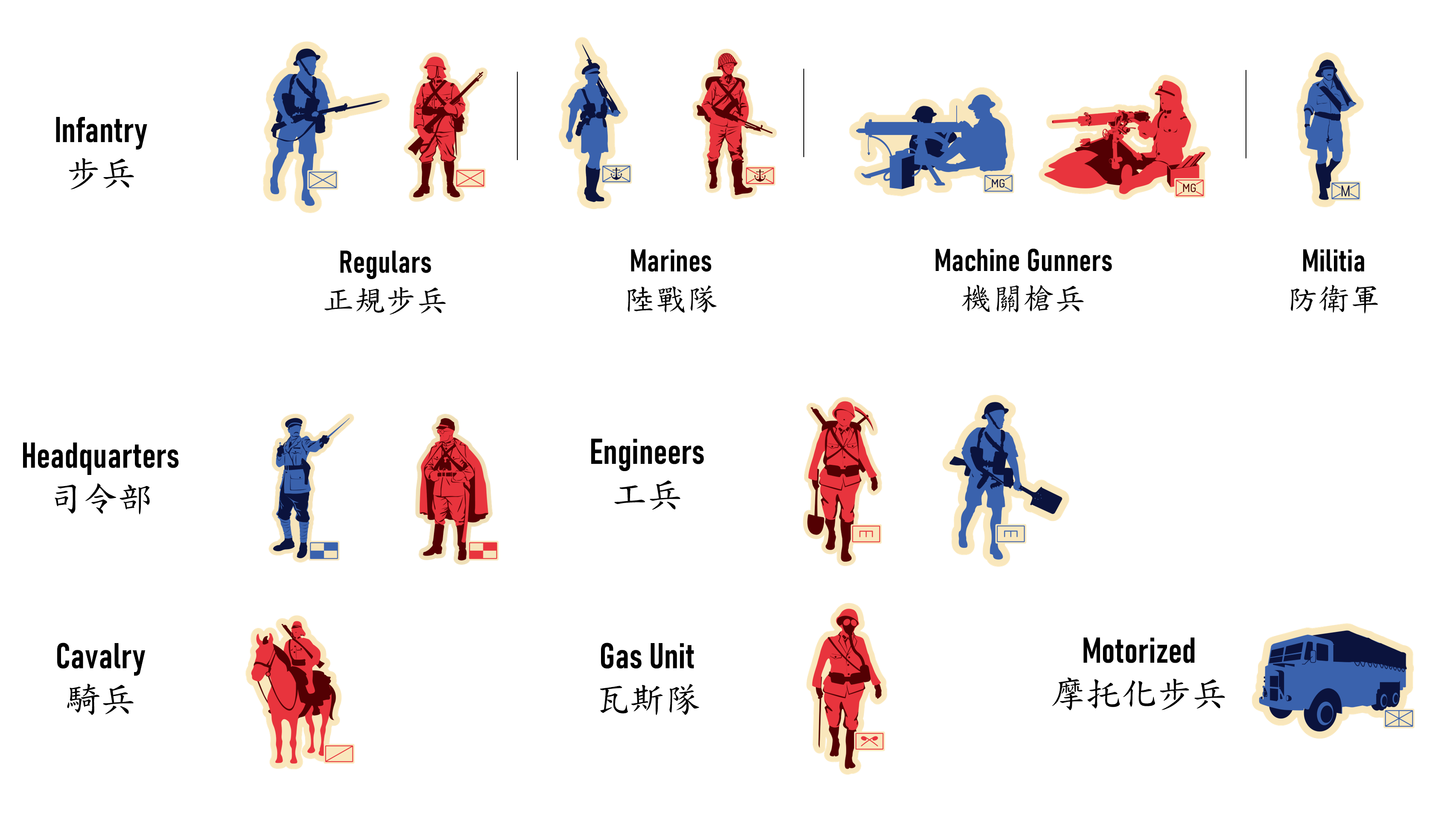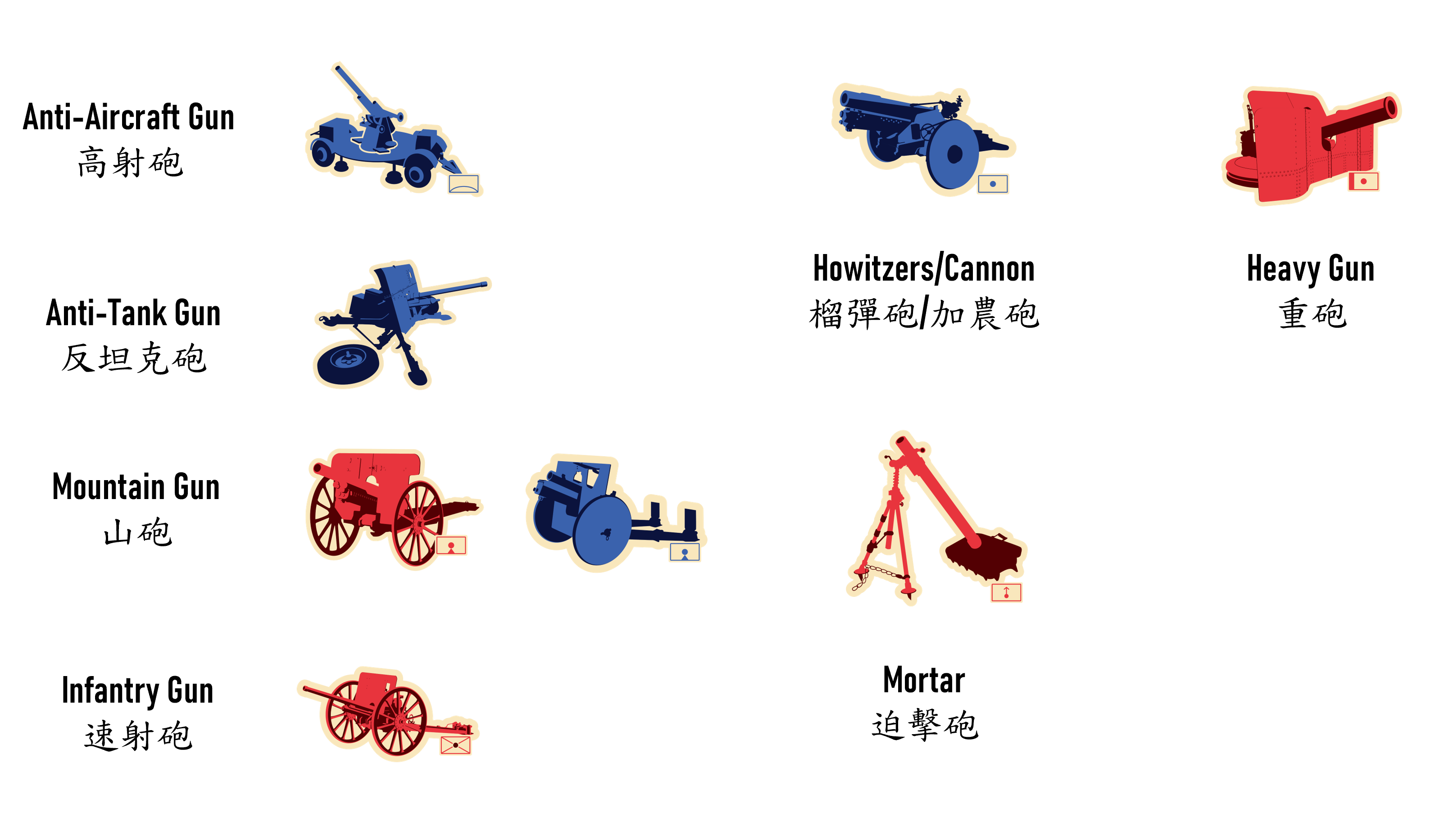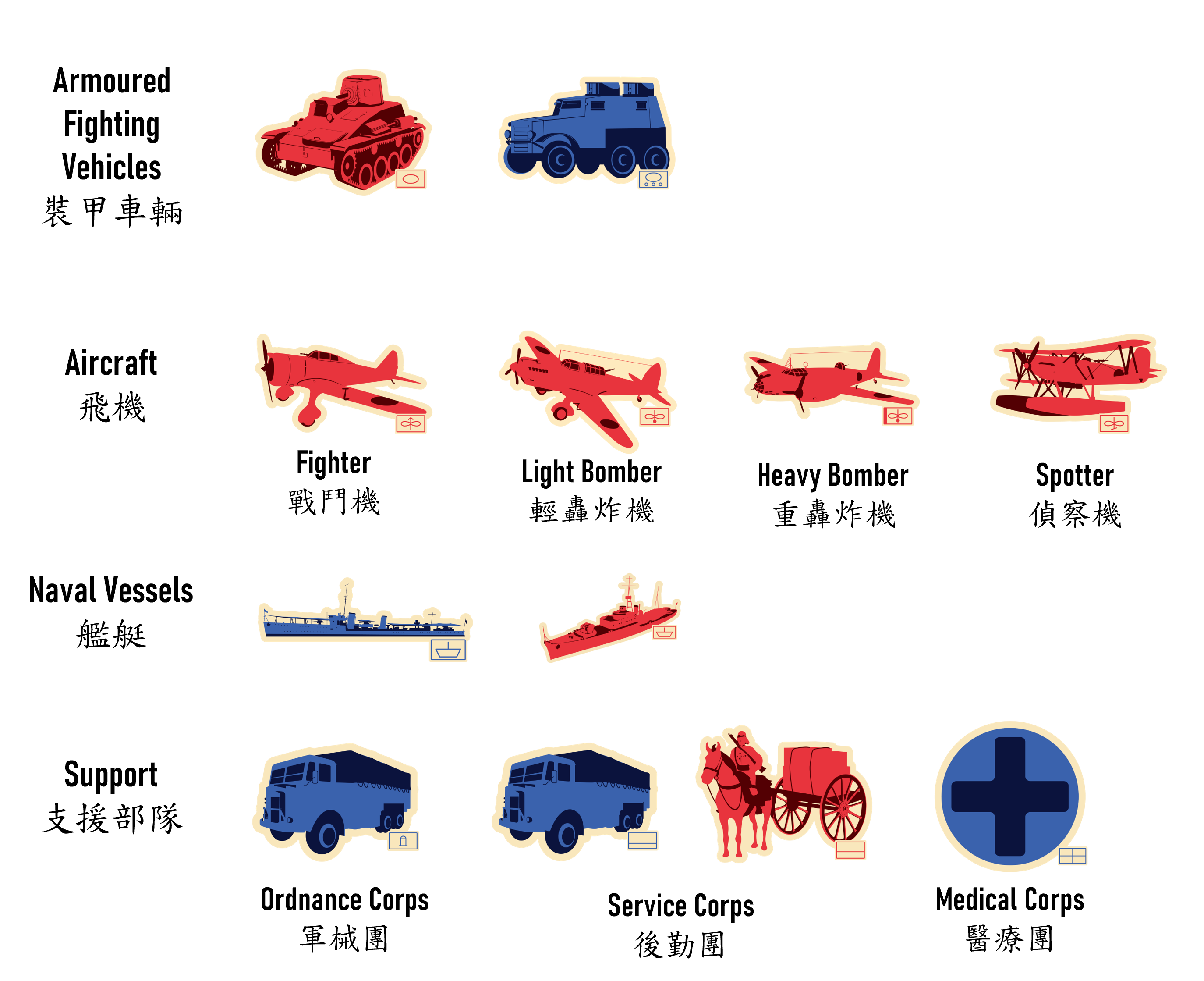Note on Unit Symbols
During the Battle of Hong Kong, both sides deployed around sixty thousand men organized into different units and formations. The type and size of the units and formations are represented by various two sets of symbols, graphical and NATO, and have the following variants:
- Unit types: Infantry (Regulars, Marines, Machine-gun, Militia, Motorized), Artillery (Anti-Aircraft Guns, Anti-Tank Guns, Mountain Gun, Howitzers/Cannons, Infantry Guns, Heavy Guns, Mortars), Warships, Fighters, Light Bombers, Heavy Bombers, Armoured Cars, Gas Unit, Headquarters and Support Troops.



Note on Unit Size
The size and command level of a certain unit are shown according to NATO practice as follows: division, brigade, regiment, battalion, company (battery), platoon, section

British Forces
During the Second World War, the largest tactical unit of the British Army was the battalion (for the Royal Artillery, it was a Battery), followed by companies, platoons, and squads. Battalions and supporting units would be organized into brigades, a formation. The “Hong Kong 1941” Web Map chooses the companies as the basic display unit, and the battalion to which each company belonged is indicated by the abbreviated name. For example, D/Rj is the D company of Rajput Battalion. The number of platoons is usually displayed as an Arabic number at the front of the unit code. For example, 7/3/VDC is the No. 7 Platoon of the 3rd Company of the Hong Kong Volunteer Defence Corps. Due to limited space and information, the map rarely shows the location of individual sections. If there are parts of the same unit that appear in different locations, “(s)” will appear alongside the unit’s name, such as “A/RJ(s)”.
As for artillery, the interactive map usually shows the location of individual troops of a battery, usually two to four guns, and sometimes the location of individual guns are displayed.
The interactive map usually shows the location of individual ships, but the torpedo boats are represented in pairs or more.
Japanese Forces
The organization of the Japanese Army during the Second World War was similar to that of the British Army, but the practice of naming units and formations was different. A corresponding translation would be: shidan (division), ryodan (brigade), rentai (regiment), daitai (battalion), chutai (company), and shōtai (platoon).
The Japanese Army units that attacked Hong Kong were under the operational control of the 23rd Corps. Among them, the 38th Division had three infantry regiments (rentai). The interactive map usually shows the positions of the subordinate battalions and companies, and sometimes their headquarters. The name of the unit is written in the form of “company/battalion/regiment”. The number of the battalion is represented in Roman numerals. For example, “3/II/229i” is the No. 3 Company of the 2nd Battalion of the 229th Infantry Regiment. Artillery and other arms also follow this example. Like the British forces, if the symbol represents part of the same unit, an “(s)” would be affixed behind the unit’s name, such as “3/II/229i(s)”.
The Japanese naval formation that attacked Hong Kong was the Second China Fleet (2CF); the interactive map shows the movement of the major vessels, while a single symbol represents groups of mine-sweepers and landing crafts.
Japanese aviation units are shown as squadrons of 6-12 aircraft.


